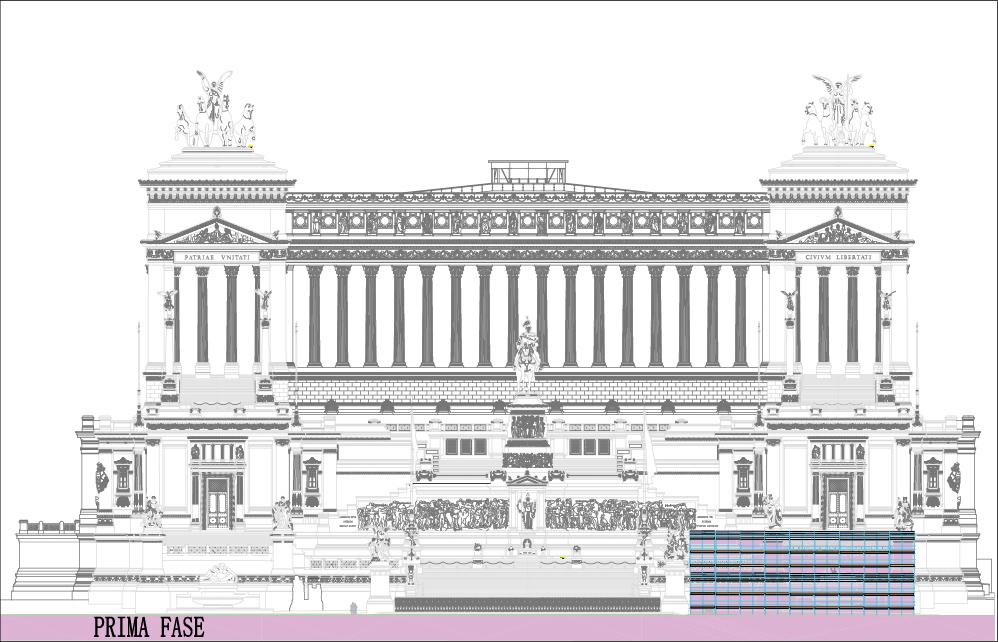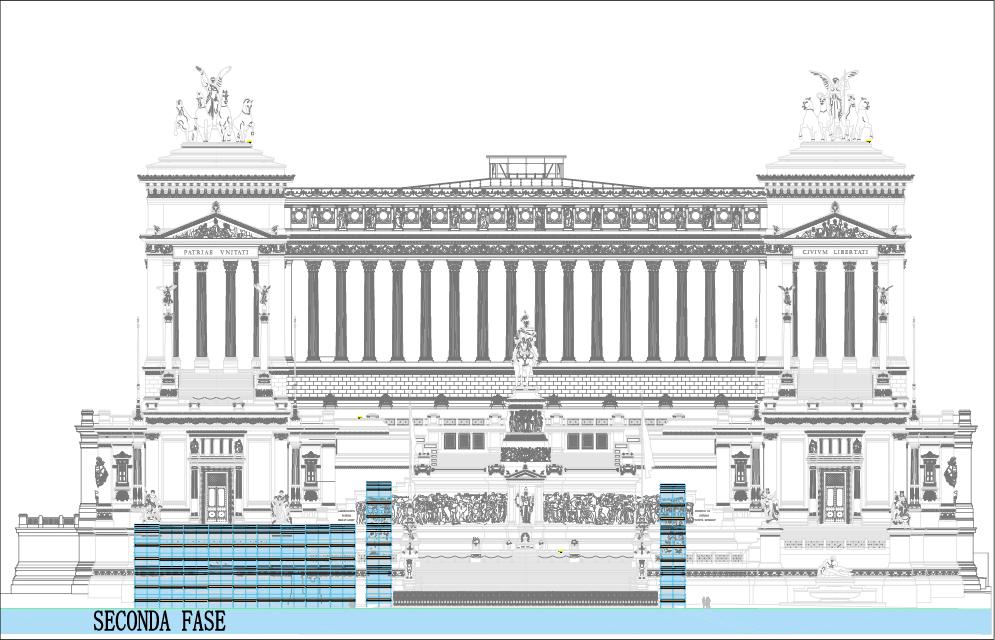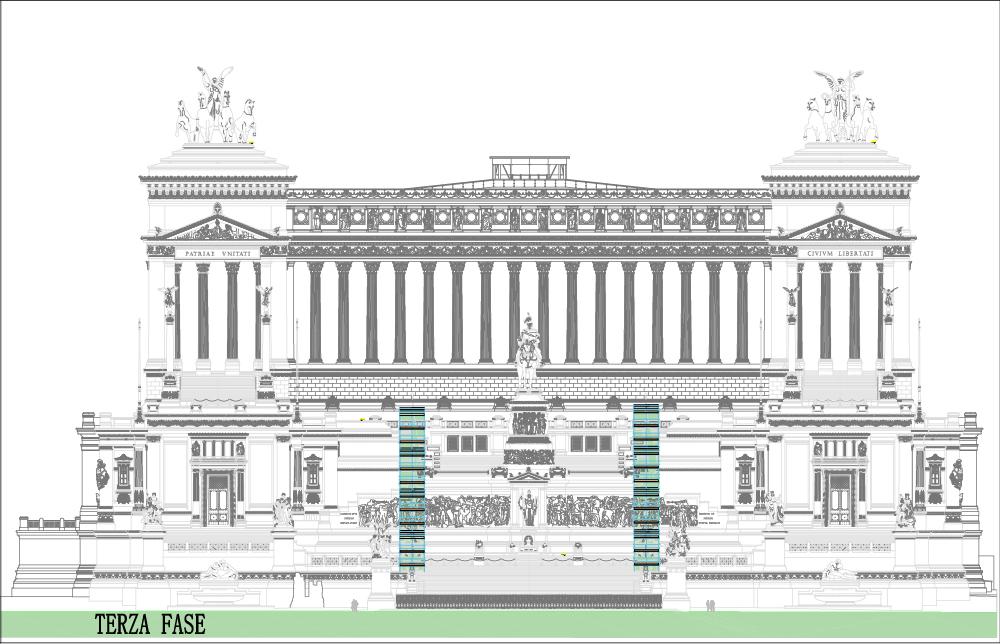Setting up temporary works
The first operation is the erection of temporary works in compliance with the specific safety regulations.
Graphic and photographic documentation and preliminary investigations
1. Photographic documentation
Prior to all works, graphic and photographic documentation will be carried out in order to have a record of the current state of conservation of the work. Subsequently, the restoration work will be documented in all its phases. The documentation of the final state after the work will conclude.
The photographs will be digital and, in the format, required for each situation.
2. Preliminary investigations
The scientific investigations will be carried out in several stages. At the beginning, priority will be given to investigations into the state of conservation and degradation phenomena; during the works, investigations will focus on the type of interventions that will be carried out; towards the end, information will be gathered on execution techniques and constituent materials.
Restoration of Metal Surfaces (Bronze and Iron)
1. Cleaning
Generally, the most suitable methods for cleaning bronze are mechanical methods, centred on operations performed by hand. Scalpels, hand-held iron brushes with fine bristles, micro-drills equipped with small grinding wheels or abrasive rubbers or even steel metal bristles, vibro- engravers, ultrasonic scalers, etc. are used, all tools with which the thickness of the corrosion patina is reduced, and very convincing aesthetic results are obtained. With these methods, one is able to control the surfaces of the object as one proceeds with the work.
In our case, it will also be necessary to remove layers of dirt deposited of various kinds with solvents, compresses or other means, without acting on the original patinas or gilding. The aim will be to free the bronze, partly burnished and partly gilded, from the overlying layers that disfigure its appearance and tarnish its original splendour.
Various methods will be attempted to develop the most suitable method.
2. Conservation treatments
This will be followed by conservation treatments for bronze, which will consist of the following stages:
- washing with normal water first, deionised water afterwards;
- corrosion inhibitor treatment with cysteine dissolved in 1% water in ethyl alcohol or with benzotriazole;
- application of surface protection (Reswax microcrystalline wax or other).
The conservative treatment of the iron will instead consist of the following phases
- mechanical cleaning of the surfaces to remove inconsistent corrosion products;
- washing with normal water first, deionised water afterwards;
- corrosion inhibitor treatment with Fertan or other rust converter;
- application of surface protectant (Paraloid B72 5% in nitro thinner).
At the end of the cleaning and conservation treatments and after the application of the protective coating, any small gaps may be filled in with coloured epoxy resin. For any larger gaps, both the criteria and the method of integration will be evaluated during the work. Assessments for the integration or replacement of support rods in poor condition will also be carried out during the work.
Restoration of Botticino Marble Surfaces
The removal of incoherent deposits on the material, which, unlike crusts, do not affect the chemical nature of the material, may be carried out using simple, easy-to-apply mechanical systems, such as: vacuum cleaners supplemented, where the specific case requires it, by scalpels, small spatulas and washing with water; special care must be taken not to cause irreversible damage to the material (incisions or marks).
Disinfestation from colonies of autotrophic and heterotrophic microorganisms (bacteria, fungi, algae and cyanobacteria) will be treated with specific biocides. The use of biocides will have to be in correlation with mechanical removal, which will be carried out with the aid of stiff brushes, scalpels, spatulas, etc., taking care not to damage the surface.
Cleaning by low-pressure hydro-washing will, in addition to the chemical action, also perform a moderate mechanical and washing action (due to moderate runoff), thanks to which most of the solubilised salts can be removed. Cleaning will necessarily have to reduce the amount of water to a minimum in order to avoid the movement of salts within the material.
Finishing cleaning will be carried out with a series of specific tools, the use of which is closely related to the degree of persistence of the substances to be removed. Mechanical cleaning will allow for the removal of dulling, deposits and incrustations that are more or less adherent to the surface. Various types of instruments can be used, from the simplest such as: sorghum or nylon brushes, scalpels, small metal spatulas, to more complex mechanised equipment such as micro sandblasting machines to remove thick deposits that are coherent and adherent to the surface, using abrasive powders suspended in a jet of compressed air directed onto the surface by means of a small nozzle.
Consolidation of the surfaces will be performed with nano-lime in order to restore compactness to the stone material. The quantity of product to be used will require small tests to be carried out on sample surfaces.
The re-adhesion of detached parts will also be carried out by means of pins with the aim of re-adhering detached or detaching parts using suitable adhesives based on both air and hydraulic binders (lime) and polymeric binders (especially epoxy resins).
Grouting and micro-grouting will aim to fill gaps and discontinuities in the stone surface so as to "unify" the surface and offer adequate resistance to deterioration agents (chemical and biological atmospheric pollutants, as well as water infiltration).
Surface protection with polysiloxanes diluted in water must be carried out at the end of the planned cycle of interventions on excessively porous surfaces exposed both to atmospheric agents and to the aggression of humidity from condensation or animal and vegetable micro-organisms. The treatment will not create a continuous film on the substrate, thus allowing the substrate to transpire without changing the balance.













